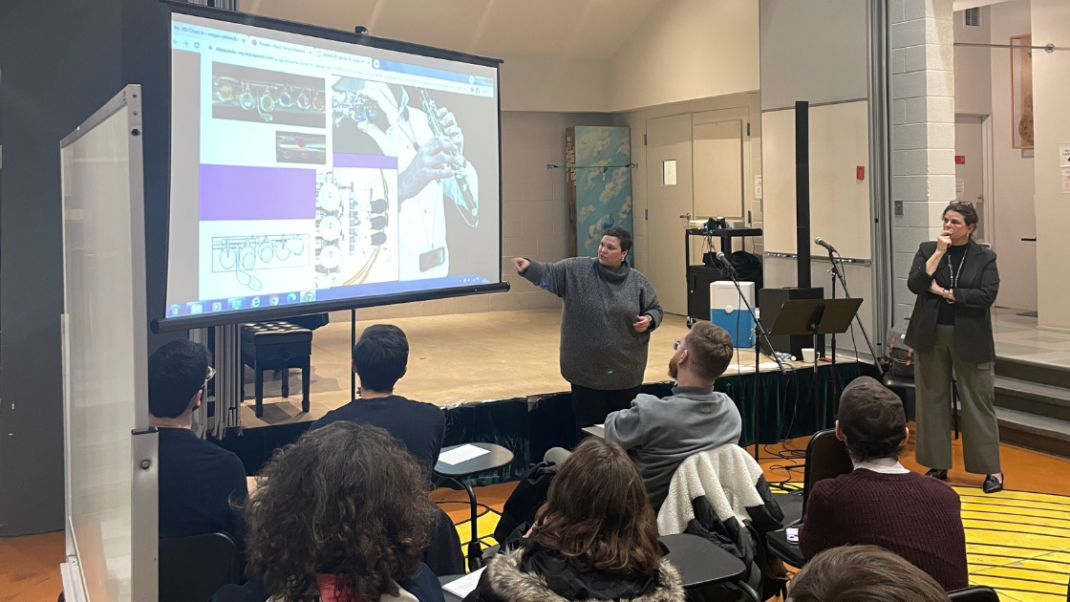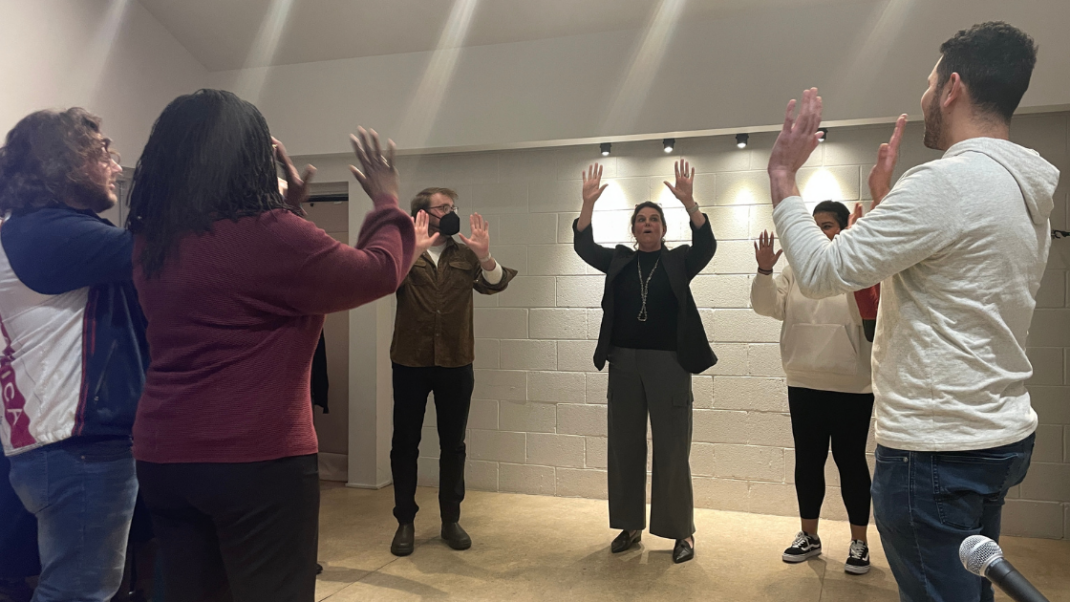At The People’s Music School, creating access is the foundation of everything we do. It’s the first noun in our mission, and it’s essential to our daily programming. How can we ensure the music classroom is always accessible to all?
This month, two experts in music education visited The People’s Music School to provide professional development on differentiating the classroom for students with disabilities. Dr. Sara Jones and Dr. Jacqueline Kelly-McHale of DePaul University’s School of Music worked with teaching artists at The People’s Music School to discuss teaching tools for an inclusive classroom and develop a deeper understanding of what providing access for all learners means in an educational setting.
Approaching Differentiation

In the U.S., 15% of public school students are classified as having a disability, and that number is only growing. Differentiating instruction is key to providing an engaging and enriching learning environment for all kinds of learners.
One of the best ways educators can cater to all students is by teaching one thing in multiple ways. “Think about how you would teach someone to tie their shoes,” says Dr. Kelly-McHale. “Come up with three different ways to talk about that one way of doing it.”
By diversifying the way a lesson is taught – whether through verbal explanation and physical demonstration, or song and movement – educators create a more inclusive classroom. “When you start approaching every educational situation that you’re in from that perspective, you’re automatically differentiating,” says Dr. Kelly-McHale.
Teaching to Different Modalities

All students learn differently, whether they have a disability or not. Successful educators accommodate multiple learning styles, or modalities, into their teaching: visual, aural, and kinesthetic. In music, these modalities could look like learning a song through repeat-after-me exercises, creating simplified notation for a student, or including opportunities for movement.
Dr. Sara Jones offered creative ways teaching artists can cater to different modalities in the classroom: “Use movement to accompany listening experiences and exercises. Have students track measures through their parts on a score. Use three-dimensional figures to represent abstract concepts like rhythm.” By incorporating unconventional methods into the classroom, educators can make sure all types of learners are engaged.
Removing Barriers to Access
“At TPMS, we remove the financial barrier to access by providing free music education and free instruments,” says The People’s Music School President & CEO, Miriam Owens. “But it’s a mistake to think of that as the only barrier to access that matters.”
By differentiating instruction, music educators help remove physical, sensory, social, and cultural barriers to access for students with and without disabilities. “It’s important for everyone who teaches students in our context to understand the different barriers to access that may exist.”
